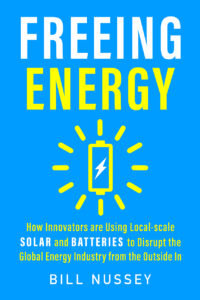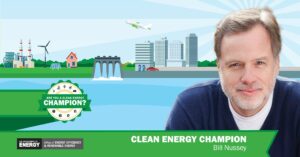The truth is that solar panels are made almost entirely with abundant, earth-friendly materials like glass, aluminum, copper, and silicon. However, as the market for solar continues to expand, concerns have emerged about trace toxic compounds used in panels. The first, lead, is widely used for soldering electronic components together. Each standard solar panel contains about 14 grams of lead1. That means about 4,400 tons of lead were used to make the 92 GW of solar panels installed in 20182. This is a large amount but still comparatively small relative to the 9,000,000 tons used for batteries each year. But for an industry focused on sustainability, the goal is to remove lead altogether. By 2026, solar manufacturers plan to reduce the use of lead-based solder to less than 50% of panels3 and to use lead in less than 20% cell manufacturing4. These numbers should continue to shrink until lead is removed from the solar supply chain.
The other toxic material, cadmium telluride (CdTe), is a known carcinogen that is used in a specialized type of solar called thin film. Improvements in traditional silicon solar have reduced thin film’s market share to about 2% and it is expected to continue shrinking. Nonetheless, all CdTe cells are encapsulated and, even in extreme landfill conditions, very little of it escapes into the environment.
Solar panels are straightforward products to manufacture, with a wide set of scientific and manufacturing variations already in use. If concerns over lead and CdTe become larger, the industry can readily replace these materials with more earth-friendly alternatives or even remove some of them altogether.
Check out our other articles on the myths and truths about solar:
- Will waste from retiring solar panels overrun our future landfills?
- Does the intermittency of solar and wind make electricity more expensive?
- The earth gets more solar energy in one hour than the entire world uses in a year
- There are more US jobs in solar than all fossil fuels put together
- “Recent facts about photovoltaics in Germany,” Fraunhofer Institute for Solar Energy Systems, section 20.1 [↩]
- Myths – Solar (smy), Freeing Energy, tab smy.5 [↩]
- “Different technologies for cell interconnection”, International Technology Roadmap for Photovoltaics 2018 results (ITRPV), page 15 [↩]
- “Lead free metallization paste”, International Technology Roadmap for Photovoltaics 2018 results (ITRPV), page 13 [↩]





6 Responses
You need to define “earth friendly.” This glibness suggests that you’ve never been to extraction and production sites for glass, aluminum, copper, and silicon. It also suggests that you’re ignoring the intense energy inputs that go into producing these materials for solar panel manufacturing.
This is great cause sources like fossil fuel and nuclear work like magic use no materials whatsoever to produce. Every power plant was produced by alchemy, a long lost art.
Yes, everything has some definable environmental impact, but that’s not the point. We need to QUANTIFY and COMPARE impacts of different options, by looking at the numbers.
Certain political views are like sewage that invades truth and vastly distorts “common sense.”
I believe that solar recycling sites will become “super fund” cleanup sites in the future. The other possibility is that MEGA solar sites of past operation will become super fund cleanup sites because we are in the “bag phone” stage of development in the solar industry.
Those rural areas like mine in SC will be cesspools of the industry “gone wrong.”
In the off chance your post is more than a troll, I will respectfully disagree. Solar power plants are one of the least toxic energy generation solutions ever created. That is why we wrote all these articles. Please read our data and share for all the other readers, specifically, why you think solar will leave a negative environmental legacy. For what it’s worth, solar panels have been generating electric power well before “bag phones” were popular.